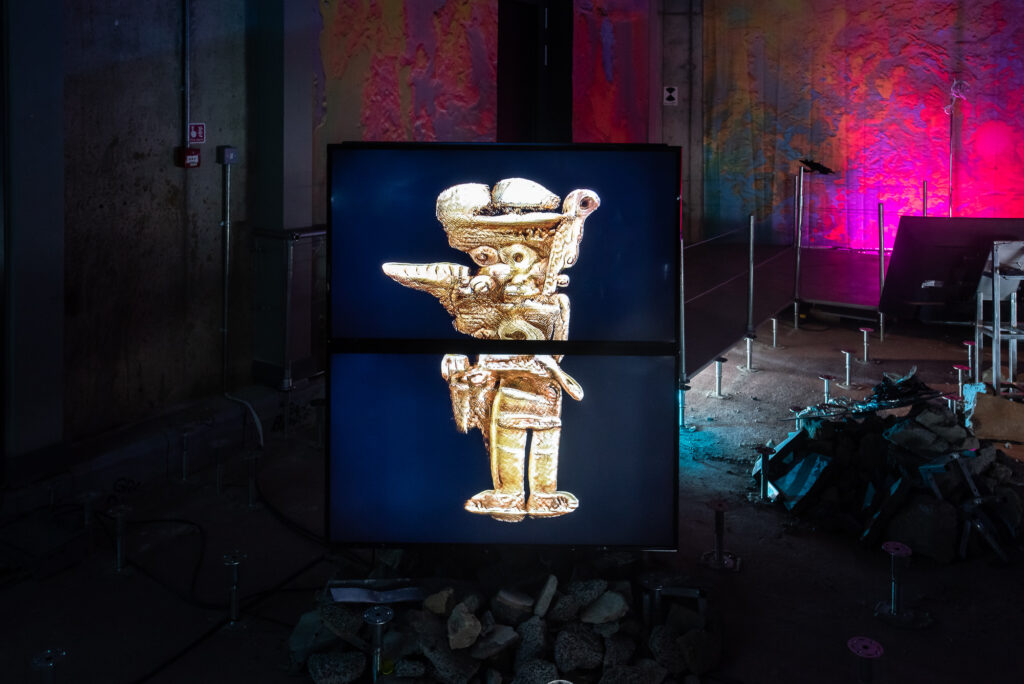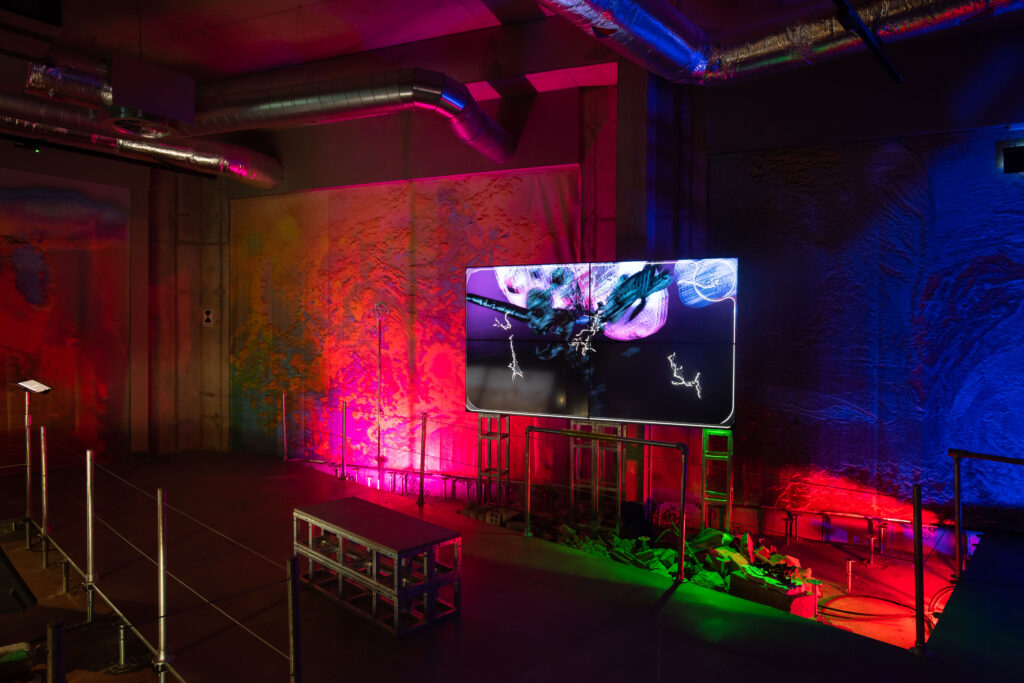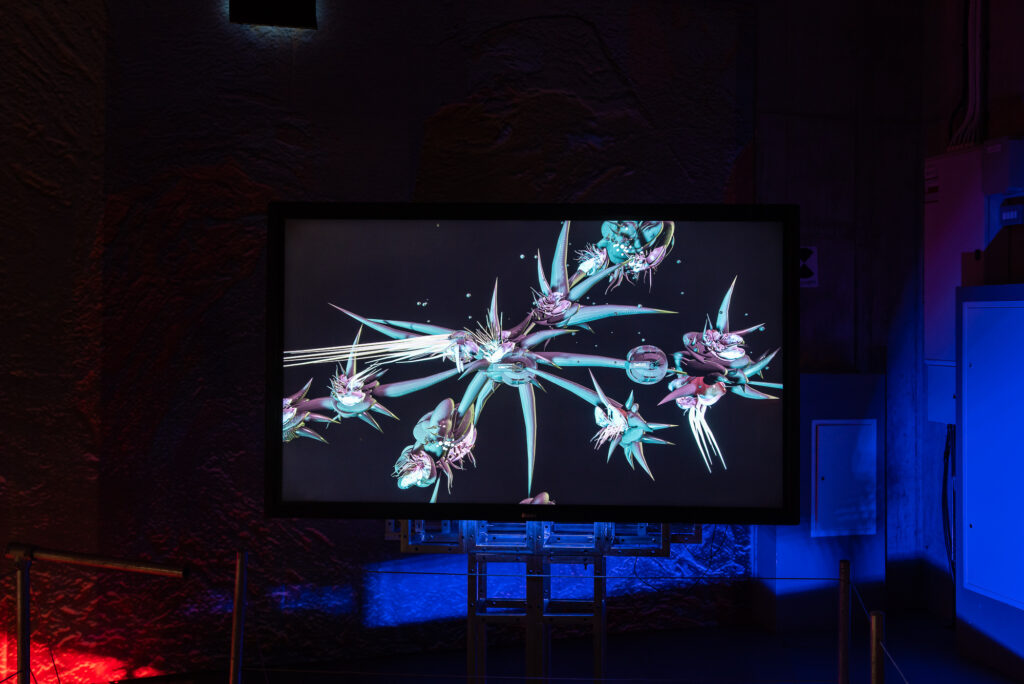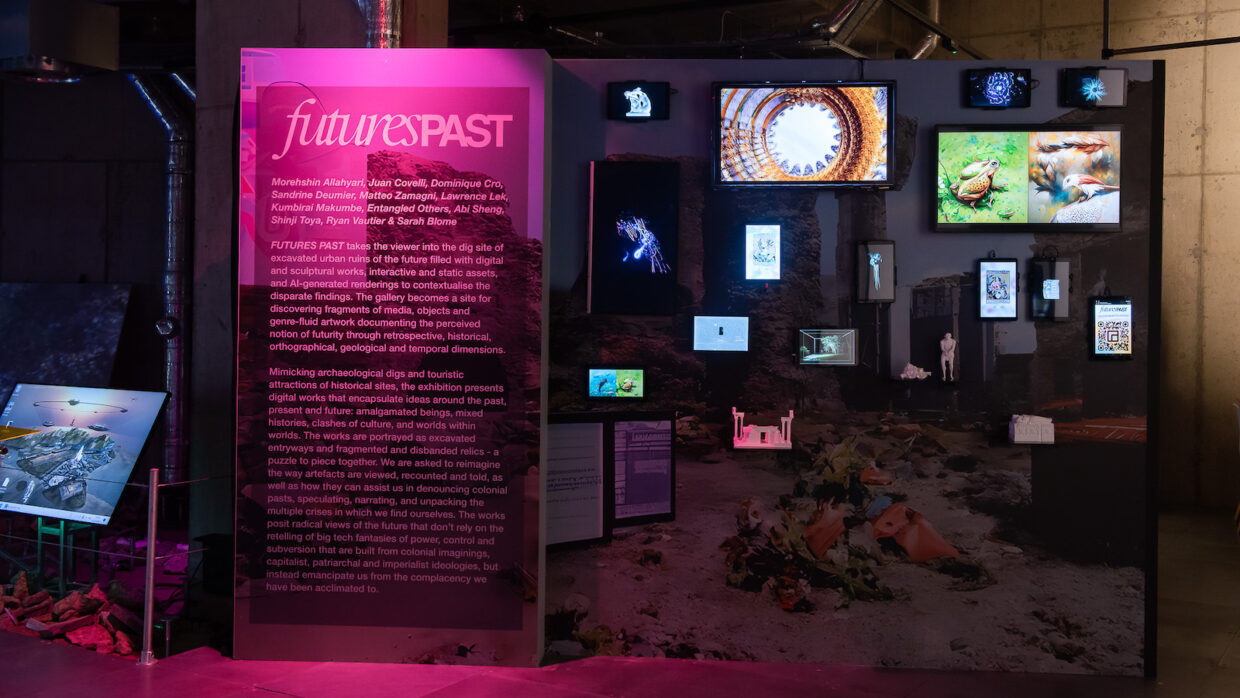Opened October 27 at London’s arebyte Gallery, the group show Futures Past seeks to lead its visitors through excavated urban ruins of the future. The exhibit links the digital, the sculptural, and the AI-generated, using monitors, projections, video walls and LED panels to blend histories, cultures, and temporalities and create unreal, archaeological scenery of the hereafter.
The exhibit is organized around five key concepts put forth by Patricia Waugh and Marc Botha in their book Future Theory: boundaries, organization, rupture, novelty, and futurity. Featuring works by 12 artists, the overarching narratives operate in tandem to ground visitors in the present moment, which, as Benjamin Noys says, is “a fraught and fragmentary site of struggle.”
The show is also accompanied by texts from media theorist Jussi Parikka, artists Morehshin Allahyari and Daniel Rourke, and curator Corinna Gardner, playing on the themes of digital artifacts as objects to be found, excavated, and reanimated.
Here are three works and artists to know:
3D simulation artist Juan Covelli

Juan Covelli, Speculative Treasures, 2021. Installation view of Futures Past (2022), arebyte Gallery, London. Image: Max Colson
Covelli’s work in Futures Past touches on the themes of “boundaries and organizations.” An artist and independent curator, Covelli’s work is influenced by his studies in philosophy and contemporary photography practices and focuses on new materialities as generated in the digital age.
Covelli uses Artificial Intelligence (AI) as a novel tool to transcend and redefine entrenched arguments and concepts about repatriation and colonial histories. His work Speculative Treasures reconstructed images of archaeological artifacts of the Quimbaya Treasure using an AI model designed to recreate 2D representations of the original objects, inquiring into the relationship between technology, heritage, archaeology, and decolonial practices in the digital age.
New media artist Kumbirai Makumbe

Kumbirai Makumbe, LDYMA, 2022. Installation view of Futures Past (2022), arebyte Gallery, London. Image: Max Colson
Makumbe’s work uses sculpture, audio-visual digital installation, image and video to interrogate the intersections between Blackness, queerness, transcendence and “inbetweeness.” They use world-building techniques and science fiction narratives to create alternative modes of futuristic being and thinking.
Their work Living Doesn’t Mean You’re Alive (LDMYA) asks what we lose and gain when creating virtual bodies. The loss of physicality is powerful to Makumbe, especially as they understand the virtual body as something with self-awareness and sentience. Does the body exist as a body or as an experience? This blurring between the digital and physical shapes engages this state of “inbetweeness.”
Pluridisciplinary artist Sandrine Deumier

Sandrine Deumier, Beyond Matter, 2022. Installation view of Futures Past (2022), arebyte Gallery, London. Image: Max Colson
Deumier works in texts, digital poetry, multimedia installations and audiovisual performances in collaboration with composers. With a philosophy and arts background, her work focuses on technological change as a theme and the place of poetic performance as a digital world-building tool.
Beyond Matter – in imitation of the survival orchid is a 19-screen, interactive virtual environment. Kingdoms of living things are related in this artificial universe — with animal orchids, mineral matter in expansion, fungal forms, and plant embryos all fusing together. The work tries to make us question our capacity to perceive the living world, introducing the idea that everything is complex, hybrid, and always in flux.



